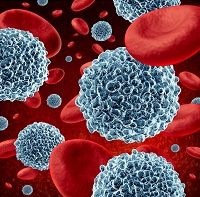Article
Getting Some Answers about HIV-Associated Anemia
Author(s):
Detecting iron deficiency or iron-restricted erythropoiesis (the presence of multiple iron deficiency syndromes) can be a challenge when inflammatory disease is thrown into the mix.

Detecting iron deficiency or iron-restricted erythropoiesis (the presence of multiple iron deficiency syndromes) can be a challenge when inflammatory disease is thrown into the mix.
A team from St. John’s Research Institute and St. John’s Medical College & Hospital previously discovered that micronutrient deficiencies in patients with HIV (human immunodeficiency virus) caused high prevalence of anemia and inflammation. Now the team is back at it and Kanuri Giridhar, PhD, is set to present their latest research at the 57th American Society of Hematology Annual Meeting (ASH 2015) in Orlando, Florida.
“Using serum hepcidin as a biomarker, we tested the hypothesis that total body iron stores like inflammatory signals would also influence serum hepcidin levels in patients with HIV infection,” the authors explained.
The researchers analyzed a total of 170 participants who had pure iron deficiency anemia (IDA), HIV with anemia, HIV without anemia, or healthy (33, 46, 46, and 45 patients, respectively). World Health Organization (WHO) recommendations were adjusted for age, anemia diagnosis, ferritin <12µg/L, and CRP values when necessary.
- MD Magazine is on Facebook, Twitter, Instagram, and LinkedIn!
The average hemoglobin levels were significantly higher in patients with pure IDA, HIV with anemia, and HIV without anemia when compared to healthy controls (10.1, 11, 13.8, and 15.2 g/dl, respectively).
The results displayed significantly higher serum soluble transferrin receptor (sTfR) and serum erythropoietin levels in patients with IDA and HIV with anemia alluded that the patients were in erythropoietic stress.
Further investigation showed that serum hepcidin levels were lower in patients with IDA and HIV with anemia “suggesting that iron status influenced hepcidin levels more profoundly than inflammation in HIV infected patients.” On the other hand, erythrocyte ZPP levels were significantly higher in those groups. This indicates that both measurements could be used as biomarkers in diagnostic tests.
The next step in this research would be to assess sufficient cut-off points for patients with anemia and inflammation.
What to Read Next >>> More from the ASH 2015 Annual Meeting




